South Indian Food: Tiffin & Natural Fermentation
Mar 18,2021
South Indian Food: Tiffin & Natural Fermentation
Mar 18,2021


More and more Indian restaurants in Tokyo and other parts of Japan nowadays offer what in South Indian English are called “meals,” meaning a set plate with rice, soup, and side dishes, and “tiffin,” meaning an assortment of snacks made from rice or pulses. South India includes such regions as Kerala and Tamil Nadu.
One of the pioneers of South Indian cuisine in Japan is Numajiri Masahiko, who’s been popularizing it since the 1980s. Currently he runs the restaurant Kerala no Kaze Morning. We asked him about his passion for South Indian food. He also told us about the role that natural fermentation plays in tiffin.
South Indian cuisine, which is rapidly gaining a devoted following in Japan, is set apart by its tangy flavor. Among its hallmarks is the sourness of tamarind, a fruit of the pea family. It also features generous amounts of vegetables and utilizes herbs like curry leaves. Today, it’s gaining the spotlight thanks to its delicious lightness, which is quite unlike the rich, heavy taste of familiar Indian staples like butter chicken curry, naan, and tandoori food.
South Indian “meals” have won over many a diner because they’re a pleasure to eat in a different way from traditional curry. They don’t leave you bloated for a start. Tiffin, meanwhile, has caught the interest of fermentation fans as well as curry lovers. That’s because some tiffin items are made by naturally fermenting batter as you would sourdough with yeast and lactic acid bacteria.
Masahiko first fell in love with South Indian food in Cochin, the main city of Kerala state. He was stationed there from 1980 to 1982, when he was working for trading firm. His job was to import raw materials like building stone and clay to Japan.
Six months after arriving at his posting, he happened to eat at the company canteen of a factory he did business with. He was bowled over by how good everyday South Indian food tasted. He was amazed at how much it differed from the upscale Indian cuisine he was used to eating. And that’s how it all began.
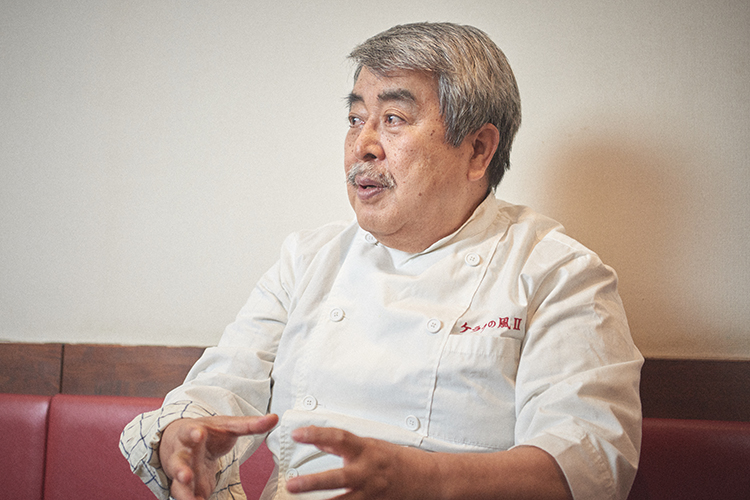
Numajiri Masahiko, owner and chef of Kerala no Kaze Morning
“It was a humble meal consisting of rice, sambar (lentil and vegetable soup), achar (pickles), and yogurt. It was incredibly easy to eat and wonderfully delicious. It shattered the notion I’d always had that Indian food was greasy.”
Having become hooked on South Indian cuisine during his sojourn, Masahiko tried his hand at recreating it on his return to Japan. Back in those days, however, there was no way to access the information he needed. There were no South Indian cookbooks in Japanese, and the Internet didn’t exist. Moreover, the requisite pulses, spices, herbs, and other ingredients weren’t easily available in Japan.
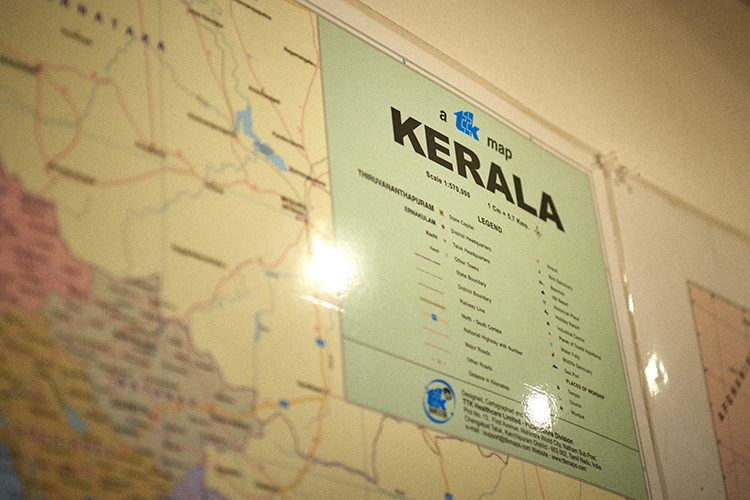
Masahiko therefore decided to turn to imported cookbooks, so he brushed up his language skills. He even took a shot at the English Technical Writing Test. Meanwhile, he attempted to source ingredients through every possible channel. He grew his own vegetables and herbs. He asked farmers to cultivate them for him, having gotten them to try his own South Indian concoctions. He spared no effort.
“I once went to the department store and asked whether they had coriander, and the store clerk treated me like I was suspicious. They’d never heard of it. And when I grew snake gourd and bitter gourd in my vegetable patch, I got complaints about these weird plants no one had ever seen before.”
The advent of the Internet in the late 1990s was a game changer. Recipes, and information about the ingredients in them, became readily available. International cuisine experts and epicures began constantly swapping information.
Then, in 2000, Masahiko started bringing the great taste of South Indian food to a wider audience. While honing his culinary skills, he organized dining events at community centers featuring “meals” and other South Indian dishes. Initially, he signed up participants by emailing Asian food bloggers and other aficionados.
“Everyone thought I was creepy [laughs]. Here was this invitation to some obscure dining event suddenly arriving out of the blue. At first, I didn’t even get many replies turning down the invitation, and few people showed up.”
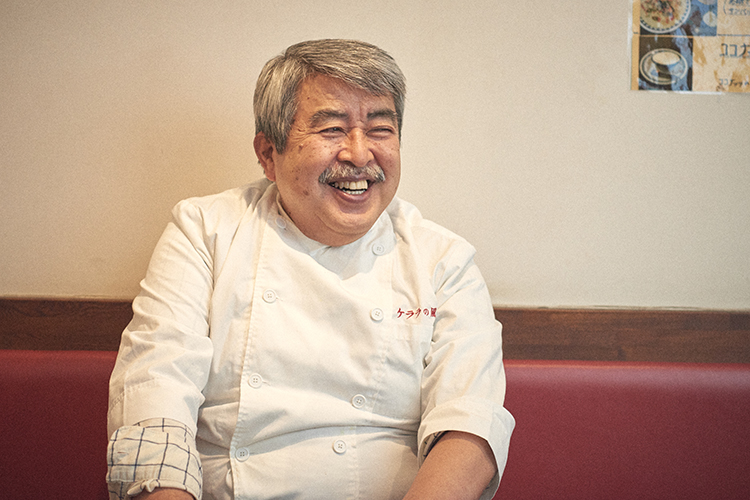
Still, those who did attend found the food both unusual and delicious, and word soon spread. Before long, Masahiko’s dining events were so popular that they were booked up the moment they were announced. He organized events up and down the country, from Hokkaido to Okinawa. There were even sessions attended by 200 people at once. Masahiko served a total of 5,000 “meals” in the eight years during which he held his dining events.
In 2008, Masahiko opened a South Indian restaurant called Kerala no Kaze (“Wind of Kerala”) in the Omori area of Tokyo. He overhauled the business after the 2011 earthquake and tsunami and renamed the place Kerala no Kaze II, whereupon it became a bigger draw than ever. His “meals,” which were, in true South Indian style, all-you-can-eat, proved a huge hit. On weekends, more than a hundred patrons would pack into the restaurant over a three-hour period. And it only had seating for about twenty.
In 2019, the restaurant stopped offering “meals” and started specializing in tiffin. It has operated under the name Kerala no Kaze Morning even since, with a menu inspired by the typical South Indian breakfast.
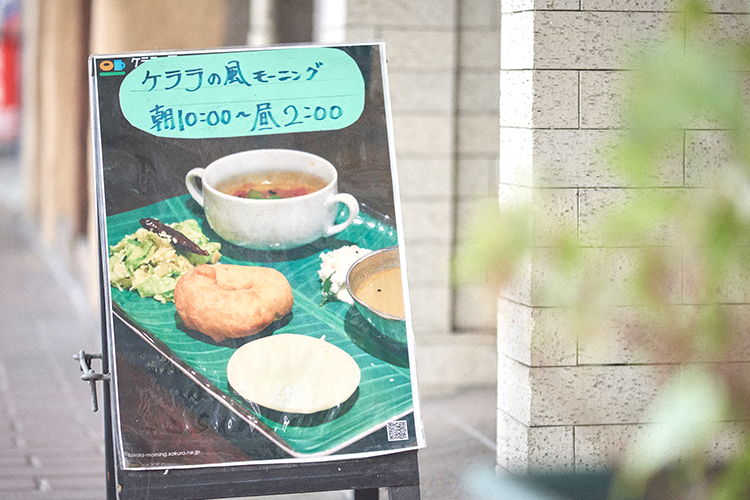
“In India, it’s the custom to eat tiffin for breakfast and ‘meals’ for lunch. So originally we opened first thing in the morning at 6:46 a.m. I figured that way people would remember us because of the odd time, plus we’d be up and running before the coffeeshops opened for breakfast. Now, though, we open at ten.”
Now that South Indian “meals” are better known in Japan, Masahiko’s next goal is to bring tiffin to the country’s Indian food fans. Tiffin wouldn’t be complete without idli, dosa, and uttapam, which are made with naturally fermented batter. For this report, Masahiko showed us how they’re prepared.
The batter is made from Indica rice, urad dal (skinned and split black lentils), and fenugreek (methi seeds)

The ingredients of the batter. From left: fenugreek, urad dal, Indica rice.
“Adding a little fenugreek ensures the fermentation process goes smoothly. Fenugreek and urad dal appear to harbor microbes suited to fermentation. On the other hand, it’s better to wash off the microbes on the rice. The experts should study the fermentation mechanism involved.”
The urad dal and the fenugreek are mixed together and soaked in lukewarm water that’s about 40 degrees Celsius. The rice is soaked in a separate container in cold water. Both are left to absorb water for about an hour. Then they’re each run through the blender — the urad dal and fenugreek with the water they’re soaked in, the rice after rinsing well and adding fresh water. This is done to ensure that the microbes naturally present on the urad dal predominate during fermentation.
The two types of paste are mixed together and placed in a fermentation chamber for 16 hours at 30 degrees Celsius — the outside temperature in South India at night. The mixture ferments naturally, without the addition of a starter such as yeast.
Idli is made by steaming the fermented batter in a special mold. To the Japanese eye, idlis look a lot like dorayaki cakes.
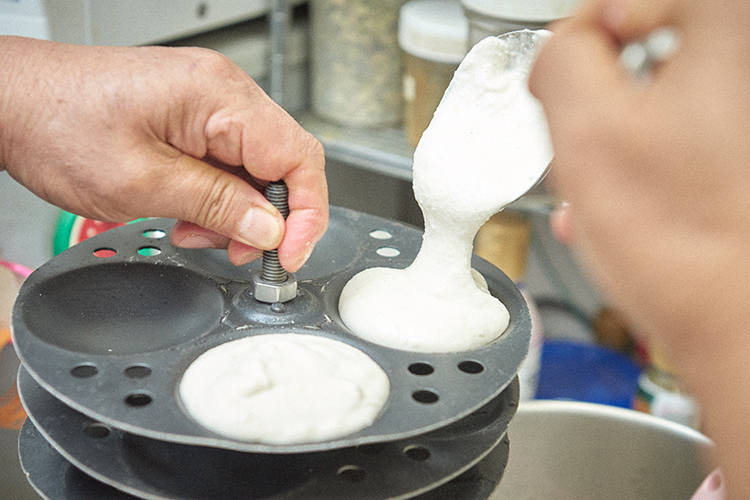
The fermented batter is poured in the idli mold and steamed.
Fermentation causes the batter to rise, giving it a light, fluffy texture. It also enriches the flavor by imparting sourness and a touch of sweetness. Idlis taste excellent eaten with soups like sambar or rasam (a sour-tasting soup), which are served with “meals,” as well as chutney (a paste-like condiment).

An idli (center). Idlis can be enjoyed at the restaurant with masala omelet, vada (a tiffin snack consisting of unfermented batter deep-fried in the shape of a donut), sambar, rasam, and chutney.
Dosa is made by cooking the batter on a griddle like a thin crepe.
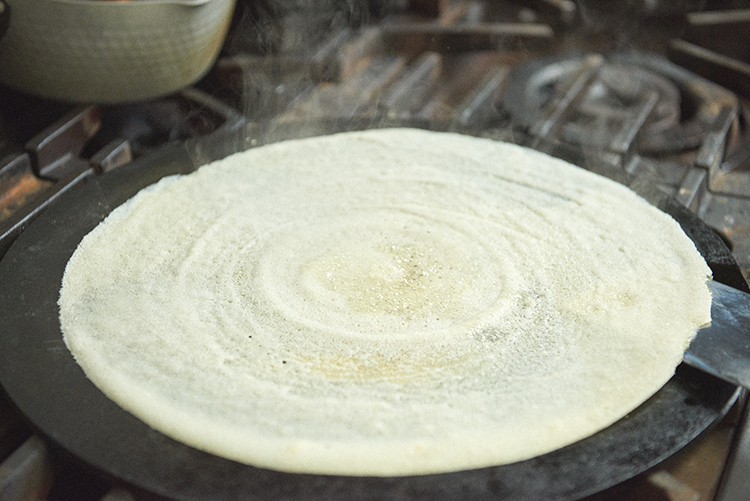
A crispy thin dosa looks equally appealing rolled into a tube. It’s crunchy in some parts and soft and spongy in others, giving it a delightful mouthfeel.
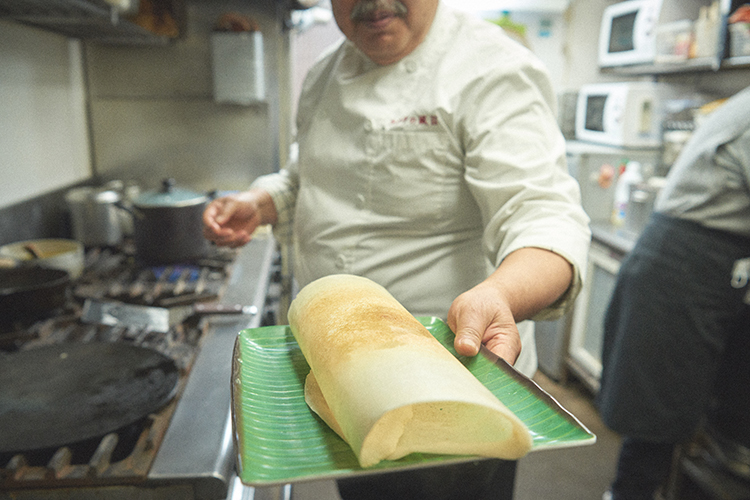
A thin dosa served rolled into a tube.
Uttapam is made by topping the batter with vegetables and other ingredients and cooking it like a pancake.
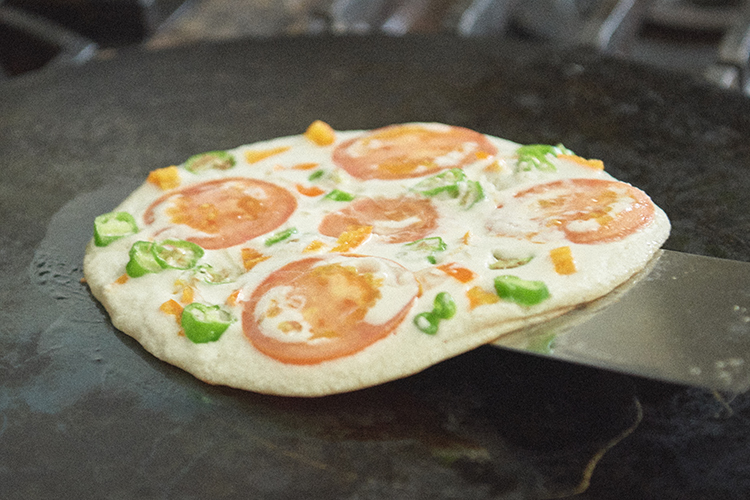
Uttapam, like pizza, comes with toppings such as tomatoes.
Listening to Masahiko, you realize that he’s something of a fermentation fanatic. He tries his hand at a wide variety of non-Indian fermented dishes on the side. Particularly intriguing are his experiments in making miso with Indian dal, or split pulses, in place of Japanese soybeans.
“Mung dal (skinned and split mung beans) is quick to ferment and yields a sweet-tasting miso. Chana dal (skinned and split chickpeas) results in the best tasting miso. Urad dal has a fairly strong fermented smell. You can even make natto with Indian dal. It’s not that gooey, but it tastes good.”
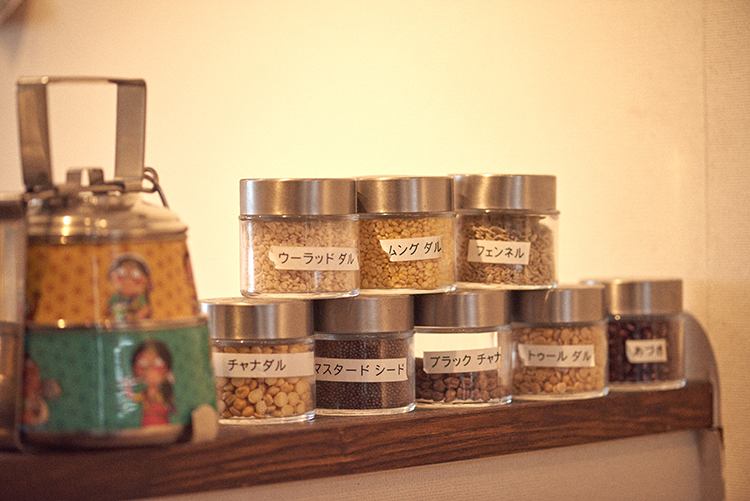
Miso and natto can be made with the dal used in Indian cooking.
Masahiko loves experimenting with fermentation and concocting new dishes. But when it comes to the dishes he serves at the restaurant, he insists on recreating authentic South Indian food exactly. He doesn’t modify a thing. That’s because he wants customers to realize how well South Indian food suits the Japanese palate.
“I was once asked to cater for an event organized by a kimono shop. The guests were in their golden years, ranging in age from their sixties to their nineties. I served them South Indian ‘meals,’ and they were unanimous in their reaction. They’d never eaten anything like it before, yet it was somehow nostalgic. And it tasted excellent.”
Rice, soup, pulses, and pickles have long been staples of the Japanese diet. They’re also key to the simple taste of South Indian food. The two culinary traditions certainly have something in common. Numajiri Masahiko’s dedication to great food and sense of fun will doubtless lead to many more gastronomic discoveries.
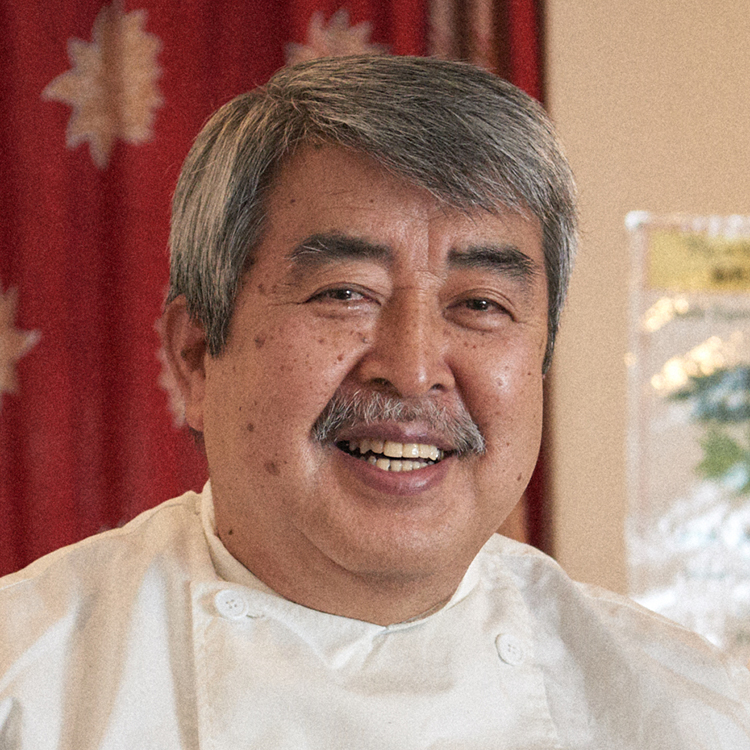
A native of Saitama Prefecture, Numajiri Masahiko first fell in love with South Indian food when he was posted in the Indian state of Kerala. South Indian food was virtually unknown in Japan at the time, and on arriving home, he started organizing dining events across the country to bring it to a wider audience. He opened the restaurant Kerala no Kaze in the Omori area of Tokyo in 2008. He renamed it Kerala no Kaze II in 2011 and Kerala no Kaze Morning in 2019, adopting a new business format each time. Currently the restaurant specializes in tiffin.
https://kerala-morning.sakura.ne.jp/